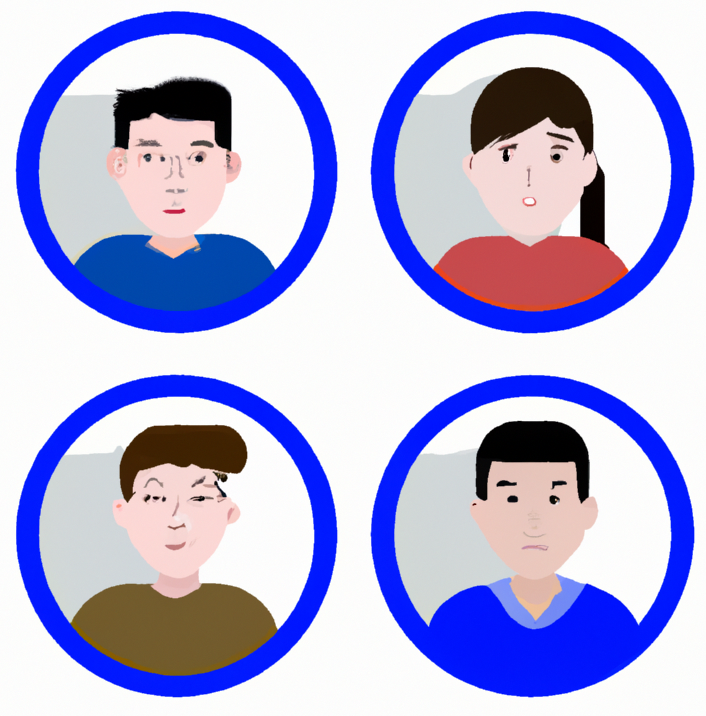TMV managed to secure an exclusive preview of report by Dave Carter a Senior Music Technology Lecturer at the Queensland Conservatorium of Music, Griffith University. The report examines whether digital social networks actually do lead to an increase in income for artists. We outline the key findings and it makes for interesting reading. The study was based around analyzing 99 independent Australian artists distributed by the Musicadium distributor and examining how their online presence affected royalty returns from June 2006 till June 2009. The study related to online activities for comparison only.
Artists included within the study fell into 3 key categories, artists with a low profile (little to no media coverage/airplay), emerging profile (formed within the last 3 years, small to medium venues) and established profile (3+ years, regular coverage in national media, medium to large venues). Median royalties for these categories were set at 1.41% for established artists, 0.2% for emerging artists and 0.11 for low artists. The median of the study is a value of 0.2% for artists’ royalty returns because they have a long tail (very few high earners and the rest not so much).
For the purposes of the study, having a high profile includes artists maintaining online presence with a website, MySpace, Facebook, YouTube, Last.fm, Twitter and other forms of online promotion like mailing lists, free content and integration between the services.
The reports outcome clearly illustrates that artists who earned the most returns had an online presence on multiple sites and services. Dedicated use of MySpace, Facebook, YouTube, Last.fm and Twitter were all-necessary and artists who used them all received 3.11% in royalties (in comparison to the median of 0.2%). If an artist only has up to a website, MySpace, Facebook and YouTube they only garnered a 0.95% royalty return, in comparison to adding integration with Last.fm (2.70%) and Last.fm and Twitter (3.11%) so those appear to be extremely important.
Having presence on all of those services garners 0.96% royalty returns in even low profiles (in comparison to the median of 0.2%) so it clearly pays to have an online presence, even if you are a low-profile artist. However, artists with emerging profiles (3.13%) and established profiles (6.52%) may of course have had promotion from the non-digital world and their fanbase could be ‘digital natives’. The study also states these numbers are consistent with “the observation that artists with an established off-line profile receive proportionally higher royalties than those with an emerging or low profile”.
The study compared online services. Conclusion include the fact Twitter and Last.fm are the most ‘profitable’ profiles to have, Twitter garnering 0.96% royalty returns and Last.fm 0.58%. They are the only two to be significantly higher than the medium of 0.2% (the rest being dedicated website, YouTube channel, Facebook page/group, MySpace page and Unearthed profile). What has to be taken into account though is most bands use MySpace, Facebook as a given and so they are rightfully near the median (0.17% and 0.23% respectively). A YouTube channel and dedicated website bring them slightly higher than the median (0.25% and 0.27% respectively) because those services are usually ‘the next step’ which many non-digital minded bands don’t utilize. The last step is usually Last.fm and Twitter profiles, and this study suggests artists who go the extra mile and keep these updated are rewarded with good returns.
Interestingly, “Under half of the artists linked between the sites and services they utilized and this corresponded with higher proportional returns (1%, compared to the median 0.2%)”. Offering free downloads, as promotion also seems to help artists out quite a bit, corresponding to 0.83% in royalty returns. Mailing lists boost returns to 0.48% and links to retailers lead too only slightly higher than the median rate of 0.27%.
Results for each key social networking site are outlined individually below.
The Facebook Pages/Groups can be quite profitable if done right. Artists need to have fan pages; having only a private profile actually puts them below the median with only 0.1% royalty returns. Having a fan page with just one fan bumps the royalty rate to 0.23%. The more fans the page has, the higher the royalty returns (500+ fans gain 2.11% returns).
MySpace
Having only a page and using it as the main website garner low returns (0.17% and 0.14% respectively). For views versus friends, friends are more important; 1000+ friends gain 0.28% in royalties but 10,000+ friends up it to 3.11%. Views don’t change the situation as much, but it’s interesting to note that 50,000+ views gain 0.48% in royalty returns yet 100,000+ views drops that number to 0.06% (lower than any view status) …the report suggests of the anomaly “It’s possible that this is the result of some artists artificially inflating their page views or other factors not accounted for in this research”.
Maintaining a Dedicated Website
Maintaining a dedicated website correlate to slightly higher returns to artists, with 0.27% in returns for simply for having one (in comparison to the median of 0.2%). Since websites don’t have social integration aspects like Facebook and MySpace do, there isn’t much room for improvement. However, having a professional design (0.32%) and a blog (0.49%) help royalty returns a bit.
YouTube
YouTube promotion is the opposite as it has the artist trying to gain presence amongst a myriad of videos. Views are important as the difference between 100+ views and 1000+ views is high (0.27% royalty returns versus 1.93% for 1000+) but after 1000 views, the return rate is exactly the same for 10,000+ views. The same goes for the number of videos the artist has on YouTube, although it seems less important. 1+ video gains 0.23% in returns but 10+ videos gain 0.54% where it plateaus as 20+ videos has the same percentage. Community engagement appears to be more essential than the number of videos, with 0.96% in returns, and they also tend to garner more views for their content.
Last.fm
Out of the 99 artists chosen only 21 have a Last.fm profile. Simply having a profile already boosts returns to 0.58% and having 10+ plays or listens increases returns to 0.83% and 0.91% respectively. The numbers strengthen with more listeners and plays up to 1000+ listeners at 3.13% and 10,000+ plays at 3.56%.
Only 20 of the sampled artists use Twitter. Simply having an account correlated to 0.96% royalty returns and having regular updates increases that percentage to 1.37%.
Triple J Unearthed
Unique to Australia, Triple J Unearthed profiles are used to boost artists with low or emerging profiles. 55 artists in the study had profiles, but just having one kept the royalty return down at 0.11% (although take into consideration the profitable established artists most likely do not have these profiles). Getting an ‘official’ review bumps the royalties to 0.45% and receiving Triple J airplay corresponds to 0.66% returns.
Blogs
Blog coverage is another important area to study and 12 artists were blogged about from the study. Those with only 1 entry were seeing higher royalty returns with 0.78% and then the number increases exponentially; 1+ entries raised it to 0.97%, 2+ entries to 1.32% and 4+ entries garnering 2.04% returns.
So, what is TMVs take on all of this? Well firstly, it seems clear that unless you are an emerging or established act your digital presence does not equate to anything near viable in terms of royalty earnings. Obviously, this leads me to state that the democratization of music via the Internet looks like a fallacy. Yes, there access may be easier but making money most definitely is not and a Big Champagne and PRS study a few months back reinforces this point. The long tail is not rearing its head in terms of the music business anyway.
So what does that signify for the current resurgence of DIY? DIY seems to be bucking the trend and we are witnessing more DIY releases each month than we have for many years. One thing seems clear; blogs do have a positive impact on royalties earned by artists. So perhaps the democratization of the fan is what is key?



